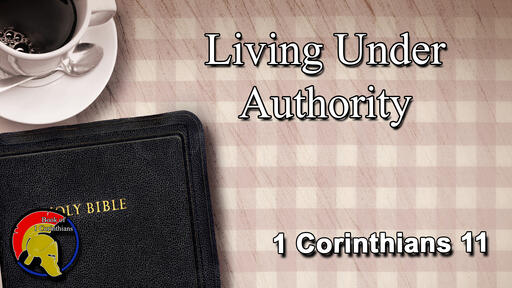Christianity and the LGBTQ+ Agenda Part 2

Notes
Transcript
We live in a culture that is rapidly changing. Ten years ago, hardly any of us gave a thought to what public bathroom we would use, biological men competing in women’s sports, bathroom bills, or asking someone their preferred pronouns. The subject of transgenderism has dominated much of our consumption of daily news, and our collective understanding of it changes daily. It is a complicated issue, and it is extraordinarily challenging to try and keep up despite any genuine desire to think through these issues biblically.
Today we are going to try to look at a 30,000 foot view of this issue and how we can begin to think through it biblically, and what that means for evangelism when encountering this topic and, more importantly, when you may encounter someone who identifies as transgender. I am going to tell you up front this is a very complicated topic and all your questions will not be answered today. I hope to demonstrate the importance of getting a grasp on this for the sake of ministering to hurting people.
Before we dive in, I want to give you some definitions of terms. These are words used all the time, but people on different sides of the issues do not always use the same terms in the same way.
Transgender: an umbrella term for the many ways in which people might experience and/or present and express their gender identities differently from people whose sense of gender identity is congruent with their biological sex.
Nonbinary: refers to a wide range of gender identities that are not exclusively male or female, or masculine or feminine.
Gender dysphoria: a psychological term for the distress some people feel when their internal sense of self doesn't match their biological sex.
Sex: refers to the biological markers that determine whether one is classified as male or female.
Gender: refers to how one may identify (man, woman, etc.) regardless of biological sex.
What does the Bible say about transgenderism? Well, nothing specifically. The Bible does not directly ask or answer the question of how to think about the incongruity between who we are biologically and what it means to be a man or a woman. What we can look to is what the Bible says about who God created mankind to be and use that to inform our thinking about how we should view the issues surrounding the transgender debate.
Then God said, “Let Us make man in Our image, according to Our likeness; and let them rule over the fish of the sea and over the birds of the sky and over the cattle and over all the earth, and over every creeping thing that creeps on the earth.”
God created man in His own image, in the image of God He created him; male and female He created them.
God blessed them; and God said to them, “Be fruitful and multiply, and fill the earth, and subdue it; and rule over the fish of the sea and over the birds of the sky and over every living thing that moves on the earth.”
The Bible says God made mankind in his image, according to his own likeness. He gave us dominion over all of creation. We are in charge as his representatives to the rest of the world. God created us male and female. When we read this, we have to remember that this points to biological sex distinctions, not gender in terms of what it means to be a man or a woman.
In verse 28, God gives the male and female joint purposes. One of them is to be fruitful and multiply. One of the purposes for existing as male and female is for procreation. The other is to exercise dominion over the earth together. God’s design is perfect for humans to flourish and fill the earth.
There are a number of other things we can say here, but for the sake of this discussion,
Our physical bodies are essential to bearing the image of God.
Our physical bodies are essential to bearing the image of God.
Genesis 1 teaches us that we come from God and we are made in his image and likeness. While this doesn’t mean we physically look like God (since God is not a physical being), our bodies are essential to that image bearing status. Genesis 2 zooms in on the creation of man and shows us the sacredness of man.
Then the Lord God formed man of dust from the ground, and breathed into his nostrils the breath of life; and man became a living being.
All the other creatures are spoken into existence. Mankind is formed by God from the dirt, like building a sandcastle. Then God does something he does with no other creature. He breathes his own breath into the man’s nostrils and this makes him a living being. This helps paint the picture that there is a sacredness about being human that can’t be denied. We instinctively know that we are valuable.
The story continues, and Adam names all the animals, but when there was no partner for him, God took the next step.
So the Lord God caused a deep sleep to fall upon the man, and he slept; then He took one of his ribs and closed up the flesh at that place.
The Lord God fashioned into a woman the rib which He had taken from the man, and brought her to the man.
In comes woman, the perfect counterpart to the man. God takes the man’s rib (which may not have been a literal rib), and uses it to form the woman. This illustrates that not only are man and woman complementary to one another, but in that there is an interconnectedness. Throw away every cliche, every joke, and every internet meme for a second and recognize that man cannot exist without woman, and woman cannot exist without man. Males cannot exist without females, and females cannot exist without males. There is an interconnectedness about us that is undeniable and it is woven into the fabric of a beautiful design created by God!
Our bodies are sacred!
Our bodies are sacred!
As we jump over to the New Testament, we consider the words of Jesus. In Matthew 19, the Pharisees come to Jesus and challenge him on the question of divorce. In his response, Jesus affirmed the truths of Genesis 1:27 and Genesis 2:24.
And He answered and said, “Have you not read that He who created them from the beginning made them male and female,
and said, ‘For this reason a man shall leave his father and mother and be joined to his wife, and the two shall become one flesh’?
“So they are no longer two, but one flesh. What therefore God has joined together, let no man separate.”
Jesus agrees with Genesis that human beings exist as binary. There are males and females. They belong to one another. Only when one who is biologically male comes together with one who is biologically female can human beings express oneness. Only together can human beings begin to capture the essence of the image of God. We are image bearers as individual people, but an expression of it happens when man and woman come together to experience God-ordained oneness.
Our bodies are sacred, and they are essential to being God’s image bearers, but, if we want to know how to be image bearers, we must look to Christ.
Jesus Christ is the image of God.
Jesus Christ is the image of God.
Jesus is not just a picture of who God is. He is not representative of who God is. He is God. To see Jesus is to see the Father. The Bible teaches us that Jesus and God are one. God exists as one entity, but as three persons: Father, son, and Holy Spirit. How this works is a mystery. The point is that Jesus is equal with God because he is God.
Look at how Colossian 1:15 says it:
He is the image of the invisible God, the firstborn of all creation.
Jesus is the fullest picture of God we have. He is the image of the invisible God. He has made the invisible visible. He has made the intangible tangible. Everything that is true of Christ is true of God.
We merely bear the image of God, but we do not do so in a capacity that accurately reflects who he is. Our image bearing is marred by sin. Through repentance and sanctification, that is the process by which Jesus makes us more like himself, that image gains clarity. Jesus, because of his sinless nature, bears the image of God perfectly. Therefore, all we need to do to see what it is like to bear the image of God is to look at Jesus.
At the center of this debate is an identity crisis. Whether one experiences an incongruity between their biological sex and their gender identity or not, all human beings face an identity crisis. We all want to know who we are, and we all look to something or someone to help us put a name to that identity. At the center of this identity crisis is a question. That question is, “Who has the authority to tell me who I am?” As we arrive at the intersection between a Christian worldview and transgenderism, one must ask the question, “Who gets to define who I am? Me? Or God? Our Christian worldview says the answer is God.
Jesus Christ, the author of life, Creator of the universe, knitter of babies in mothers’ wombs, has a plan and a purpose for your life. He is the best person to inform you of who you are because he made you. I do not believe that God creates anyone transgender. I believe that the incongruity that one experiences between their biological sex and their gender identity is a symptom of sin. I don’t mean to say that it is inherently sinful to wrestle with gender dysphoria or the incongruity between sex and gender identity. What I do mean to say is that rejection of God’s design is sin.
Remember that sin is both action and a condition. When I do something that goes against God’s design, that is a sinful act. We are born into a condition where that is our natural impulse. The gospel of Jesus Christ rescues us from that natural impulse by nailing it to the cross. Christ takes our sinful state, that rejection of his design, and gives us his righteousness, and then by the power of the Holy Spirit living in us we exercise dominance over those impulses and subject them to the authority of Christ.
Christ gets to define who I am because he made me. I get that people reject stereotypical gender roles. But the scriptures don’t give us the authority to create new categories of personhood. There are males and females. There are men and women. What it means to be a man or a woman and how that is expressed can be diverse within those two categories. If you take all of the men in a room and study what it means to be a man, you are going to get different answers that could all be valid. The same applies if you do the same with the women in the room. The point is this: If we are going to accept that God is king of the universe, it means that we are not the center of ours. He gets to define our reality, but we also understand that our understanding of that reality has been marred.
There are many questions that still need answering. There are still challenges to face, but what I can say is that the solutions being presented are devastating. Puberty blockers, hormone therapies, and sex reassignment surgeries lead to sterility. The solutions being presented lead to a facade that attempts to masquerade as the real thing. When a biological man attempts to present himself as a woman, whether it is by the way he dresses or changing his anatomy, the best he produces is a counterfeit. The same would be true for a biological woman attempting to present herself as male.
Sex reassignment surgeries did not exist in biblical times, but cross-dressing did. There are very few places in scripture that talk about this, but when it does, it is painted as negative. Deuteronomy 22:5 says that it is sin for men and women to dress as the opposite sex. The word effeminate in 1 Corinthians 6:9, scholars suggest, refers to men who act like women, playing the female role in a same sex relationship. These evidences, the natural order, and the solutions brought forth are indicators that God intends for his creatures to accept his design for the biological sexes and gender identities.
If we ever hope to evangelize the LGBTQ+ community, it starts with outrageous and courageous love.
If we ever hope to evangelize the LGBTQ+ community, it starts with outrageous and courageous love.
These issues are difficult, and have massive philosophical assumptions. The issues surrounding transgenderism are not just about whether a boy can become a girl or whether a girl can become a boy, or that there is another category. It goes all the way down to the nature of man, our existence, and what leads to a healthy and prosperous society.
The God of the Bible has made us male and female. While biological sex is not the sole factor in what it means to be a man or a woman, it hinges on it. There is diversity in manhood and womanhood, and that diversity ought to be celebrated. While the air waves and our devices are filled with talking points and heated debates, never forget that there are real people struggling with a real issue and most don’t have anybody willing to listen. We don’t have to win a war. Christ has already won. We are called to be faithful to the task.
This begins with outrageous and courageous love. It takes courage to have a conversation with someone you disagree with, especially if they personally feel an incongruity between their gender identity and biological sex. God has not called us to check our brains at the door. Rather, he wants to equip us to meet people where they are at and guide them to the gospel of Christ. For those in the LGBTQ+ community, that may simply mean developing a relationship with someone so you can earn the right to be heard.
It takes courage to extend a hand of friendship to someone you disagree with. It takes courage to try to separate all the political drama and remember to see someone as a person, as someone made in God’s image, as someone who has inherent value and worth. This is the hardest thing I have ever tried to wrap my mind around. I have had to distance myself from headlines and sound bites. A steady diet of that stuff makes it easier to see people on the other side of an issue as something less than human, and I believe that is a sin.
May we beg God to give us his eyes and see people the way he wants us to see them. They are sheep without a shepherd, and if someone who doesn’t know Christ, especially one who identifies as something other than male or female, you have an opportunity to step into that and steward it well.
Somebody will preach to them. Will we?





